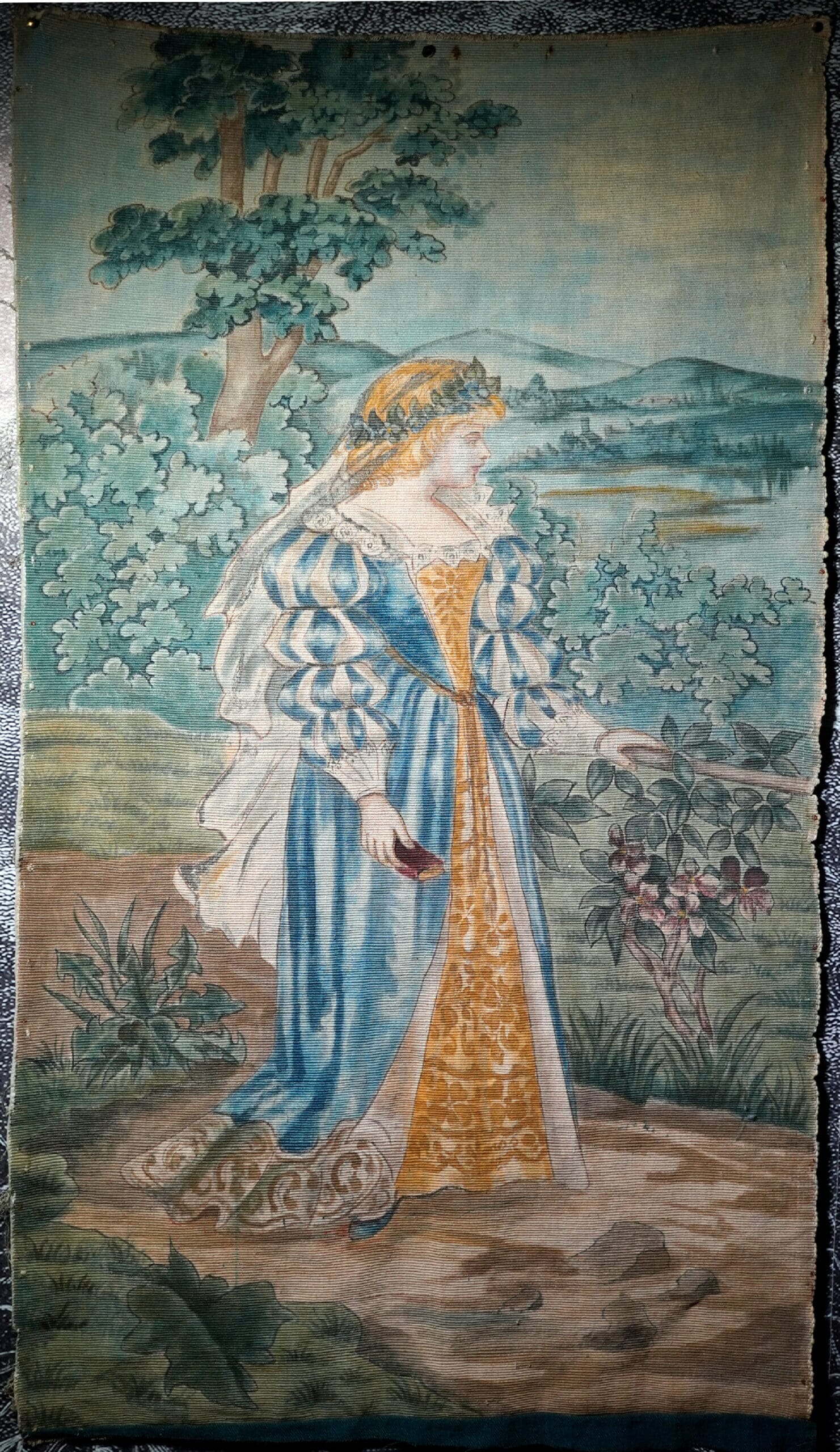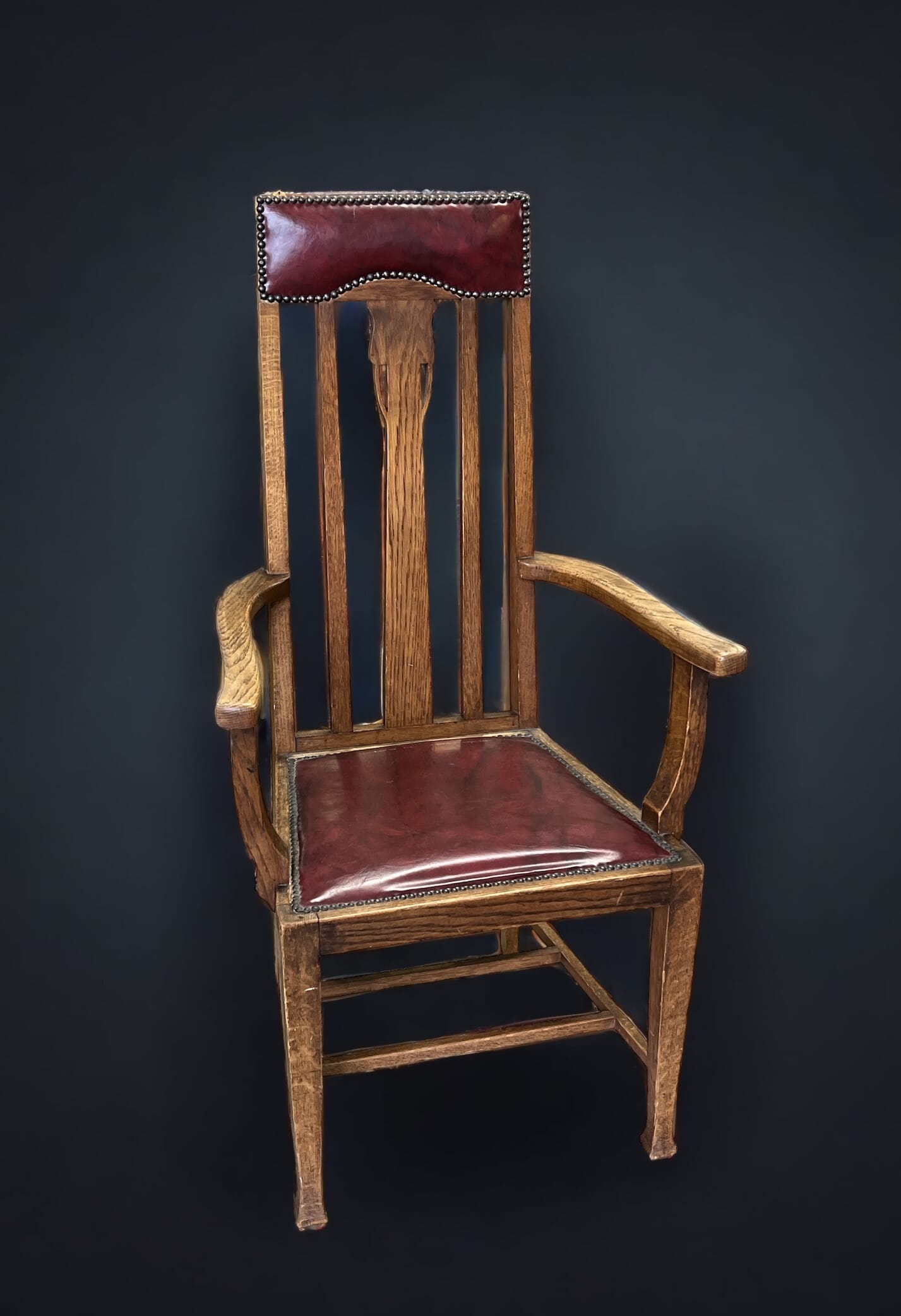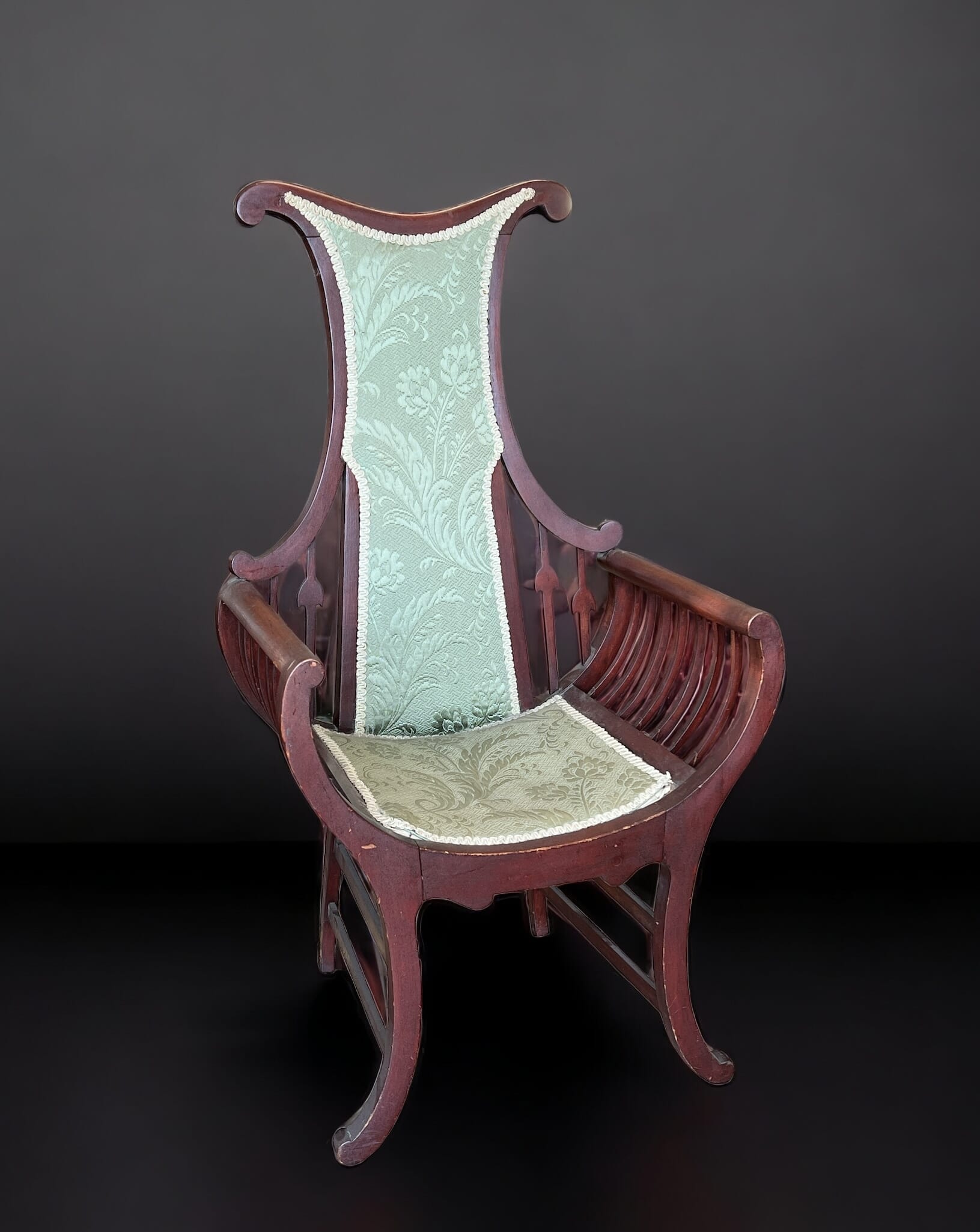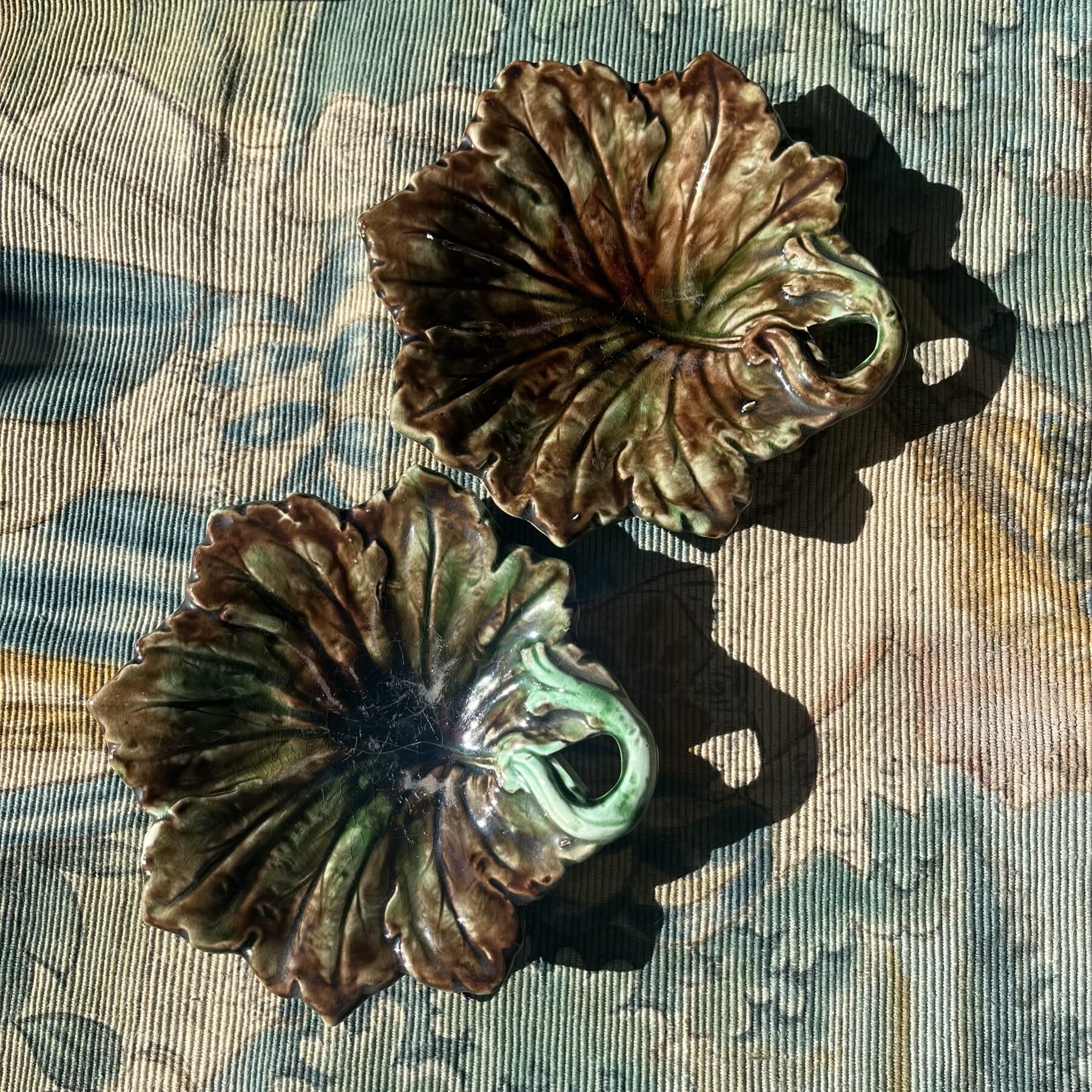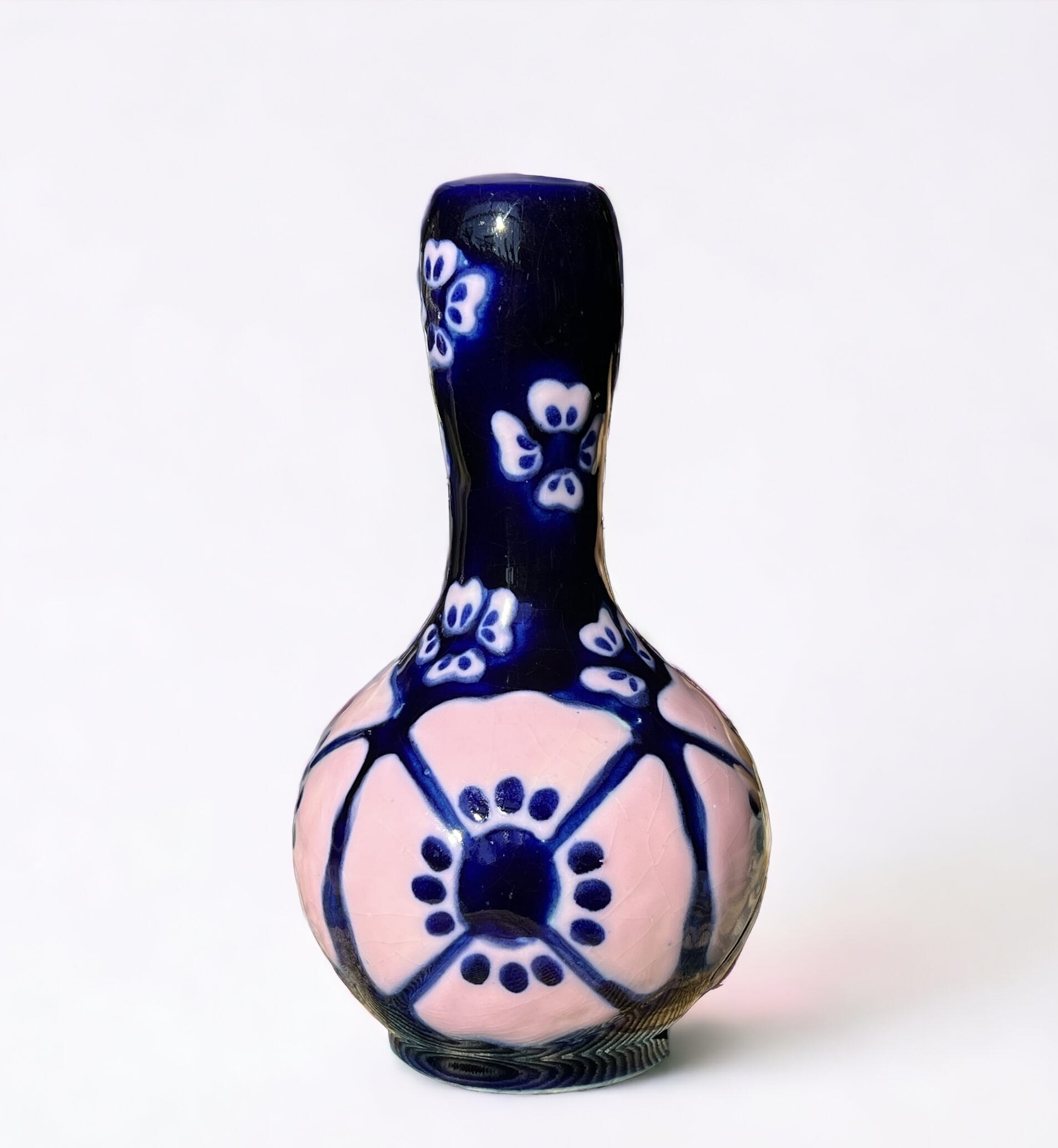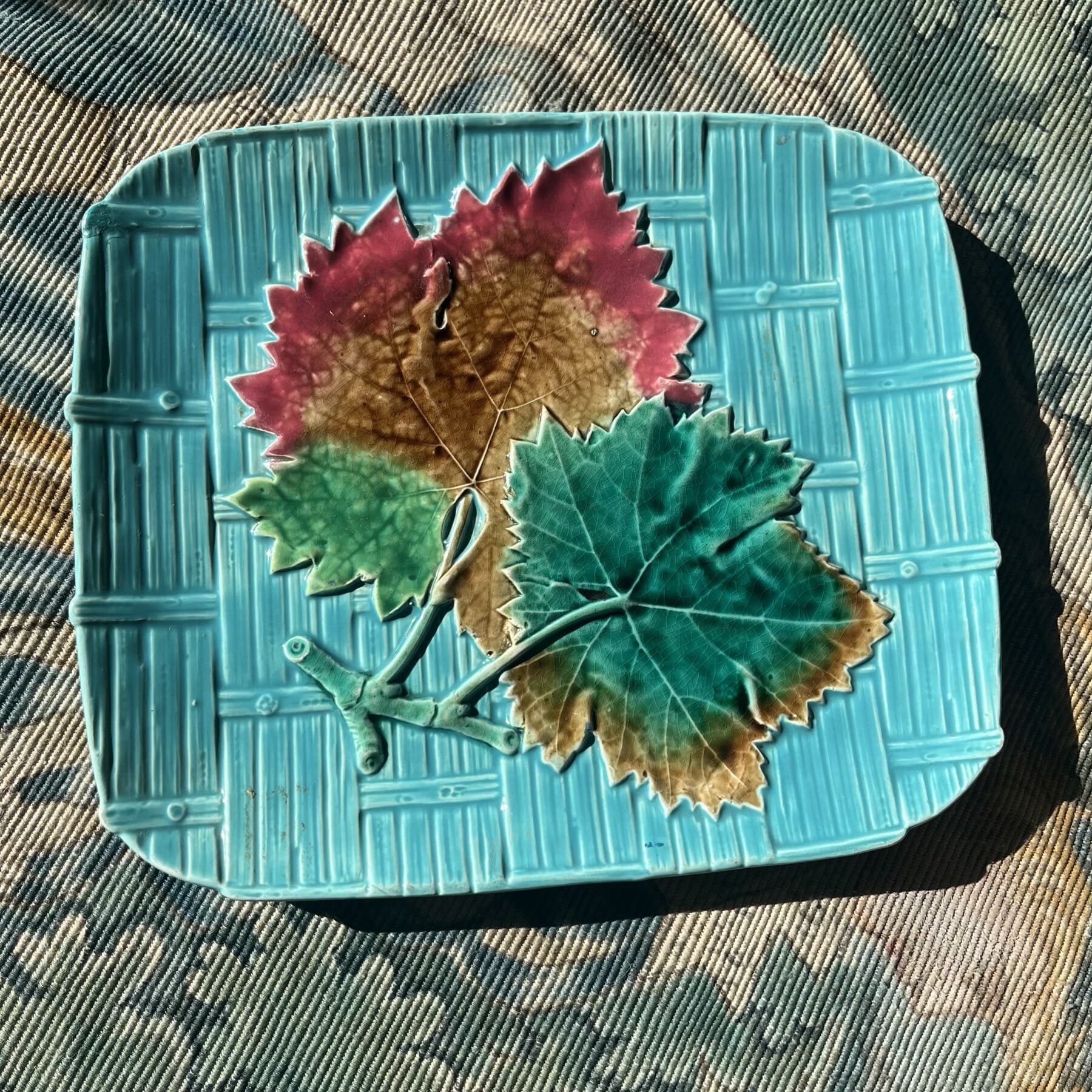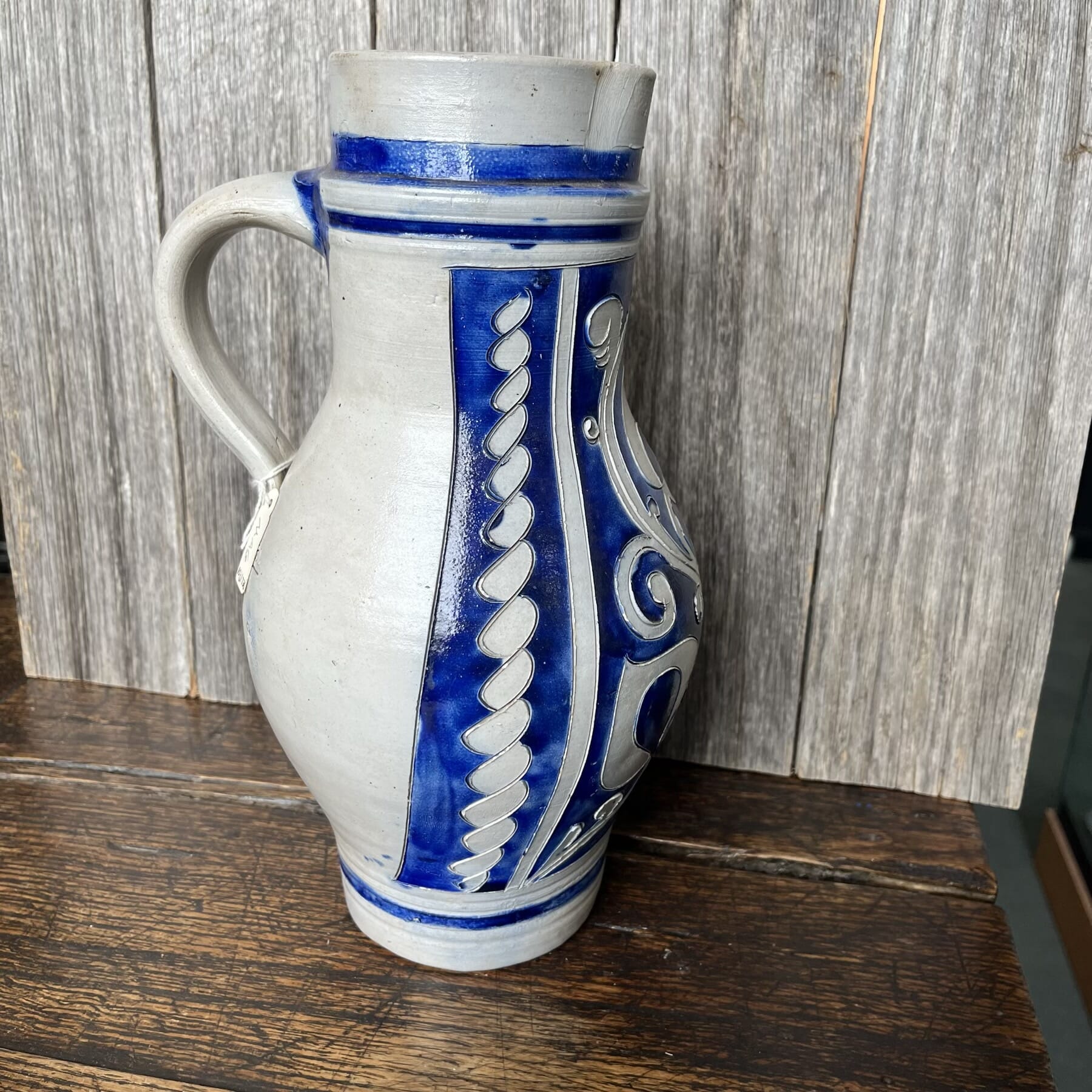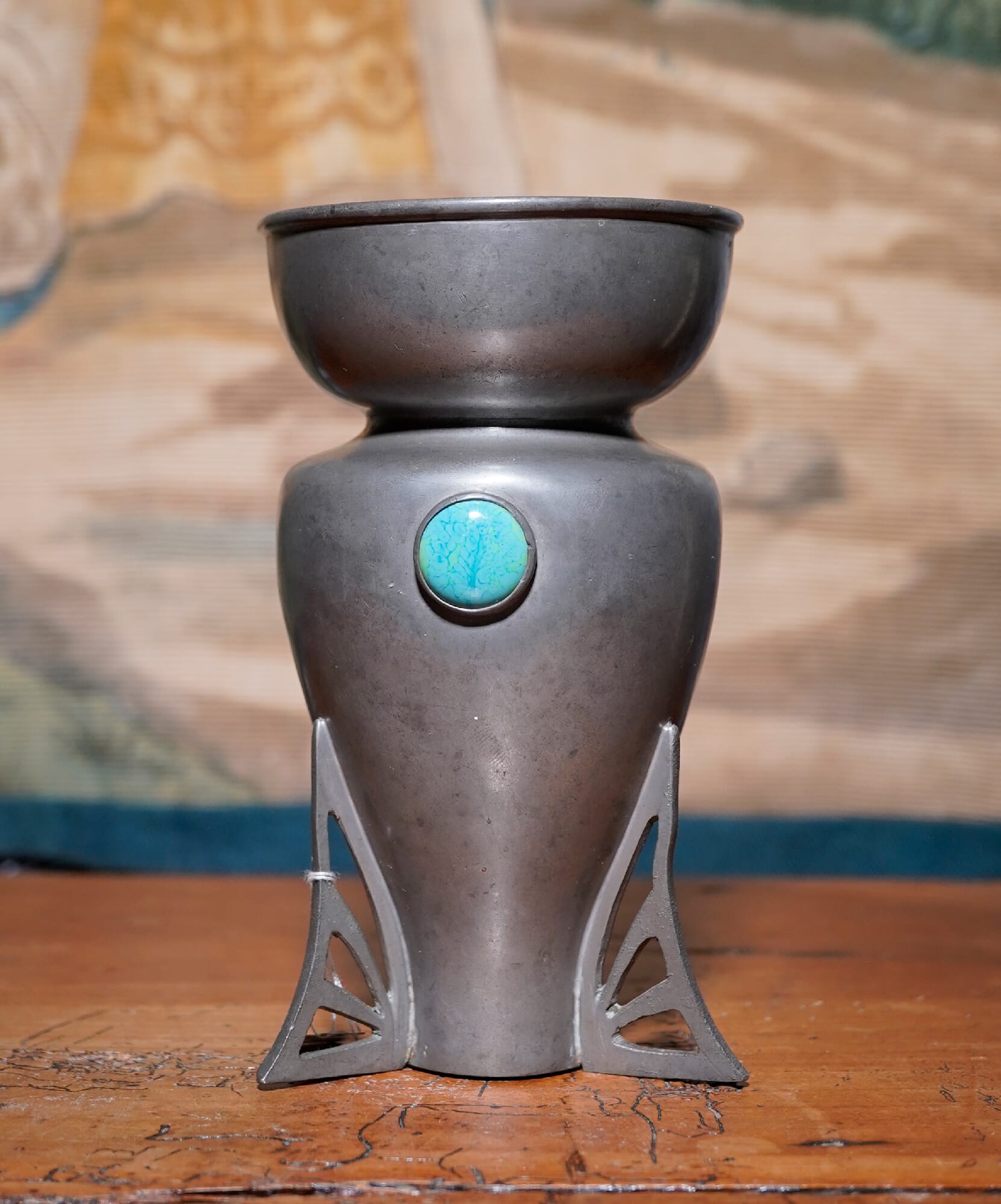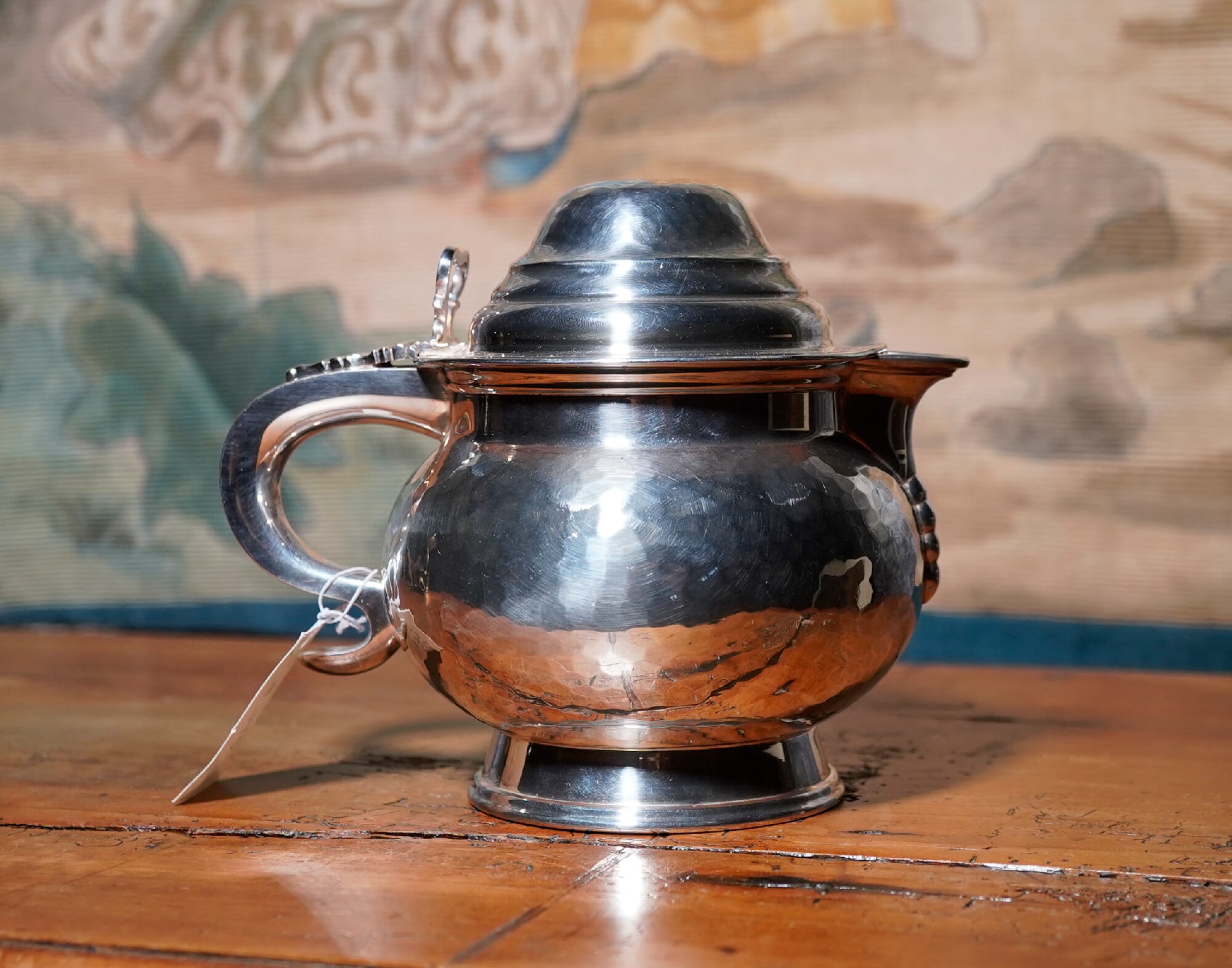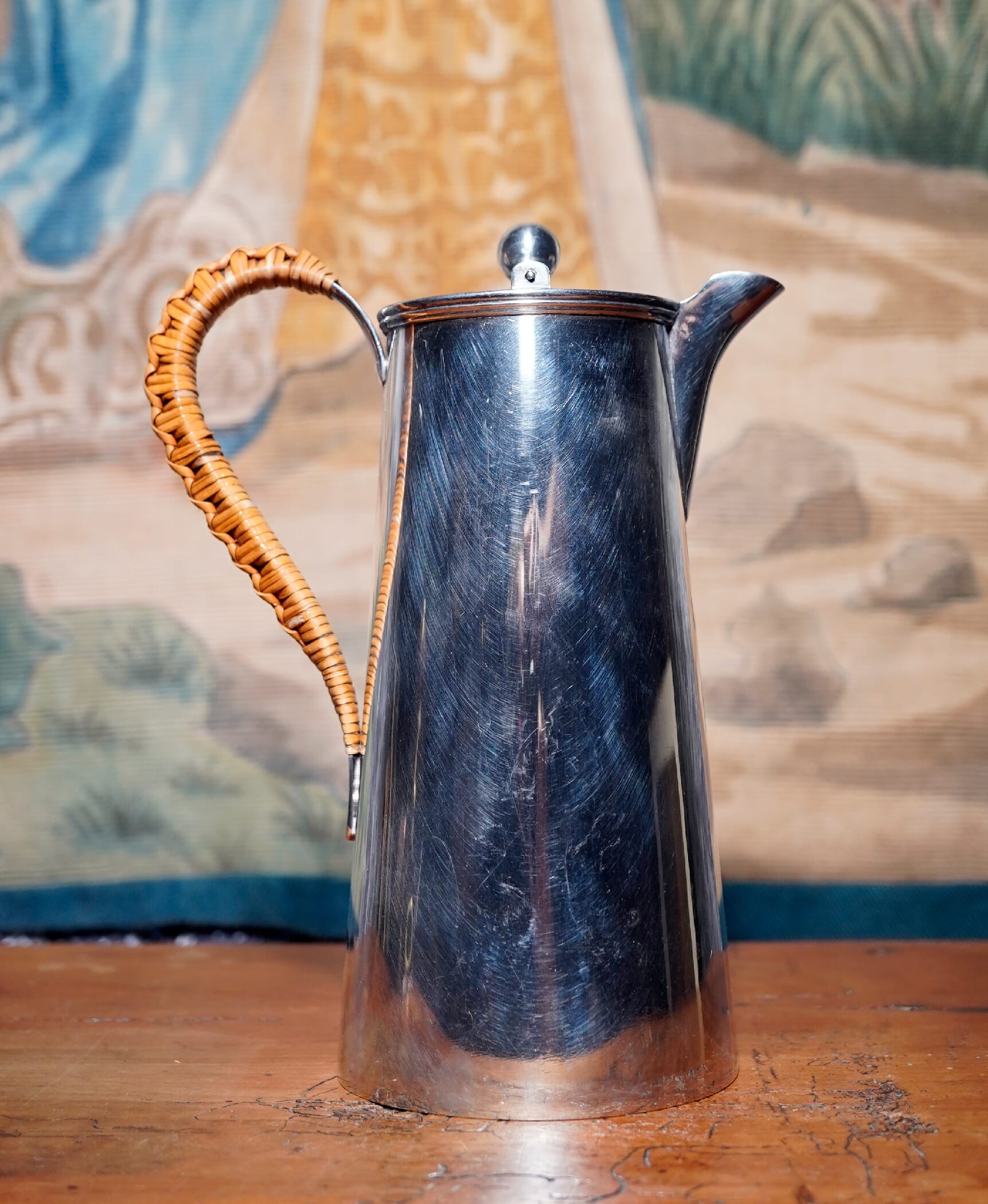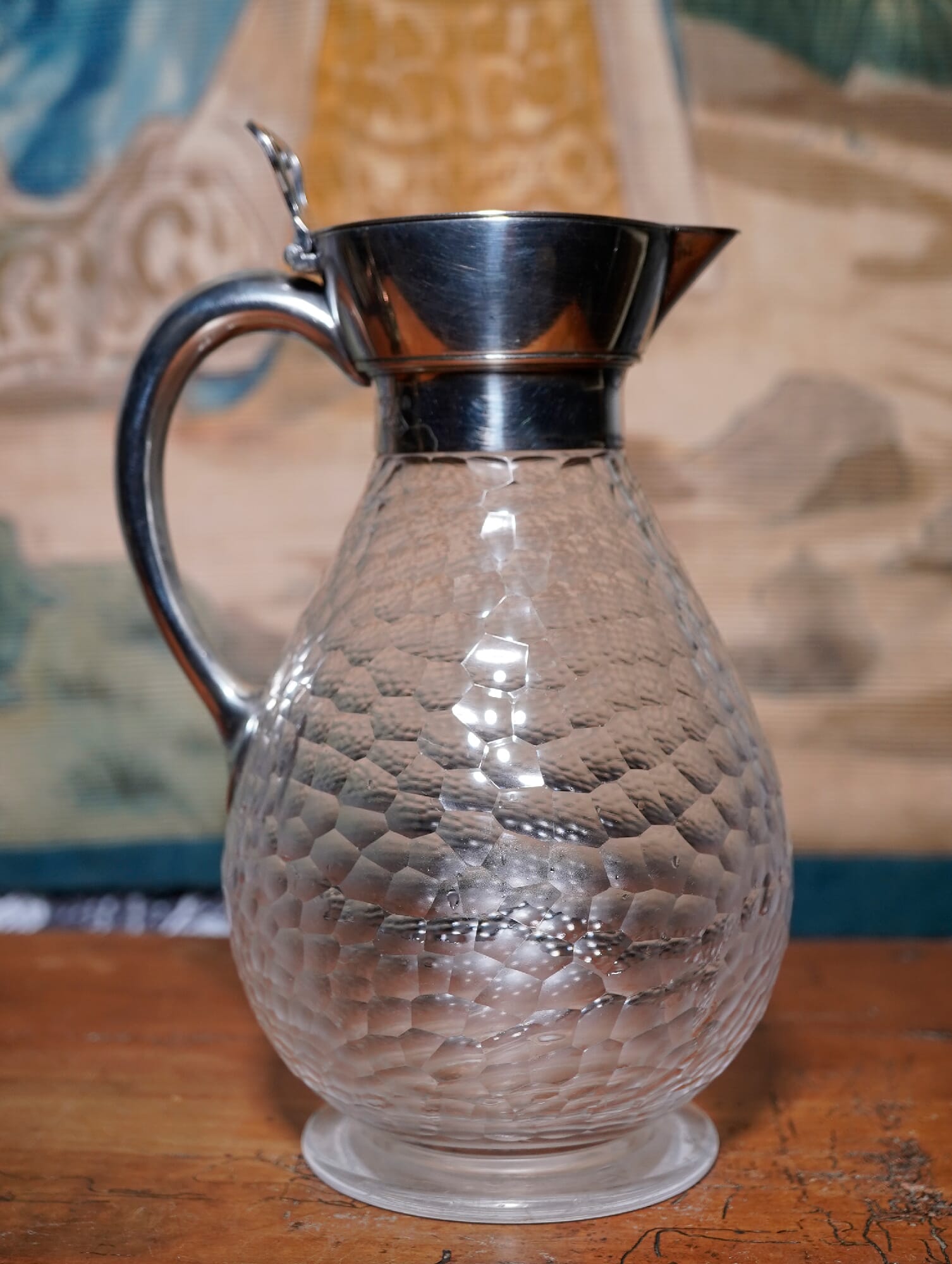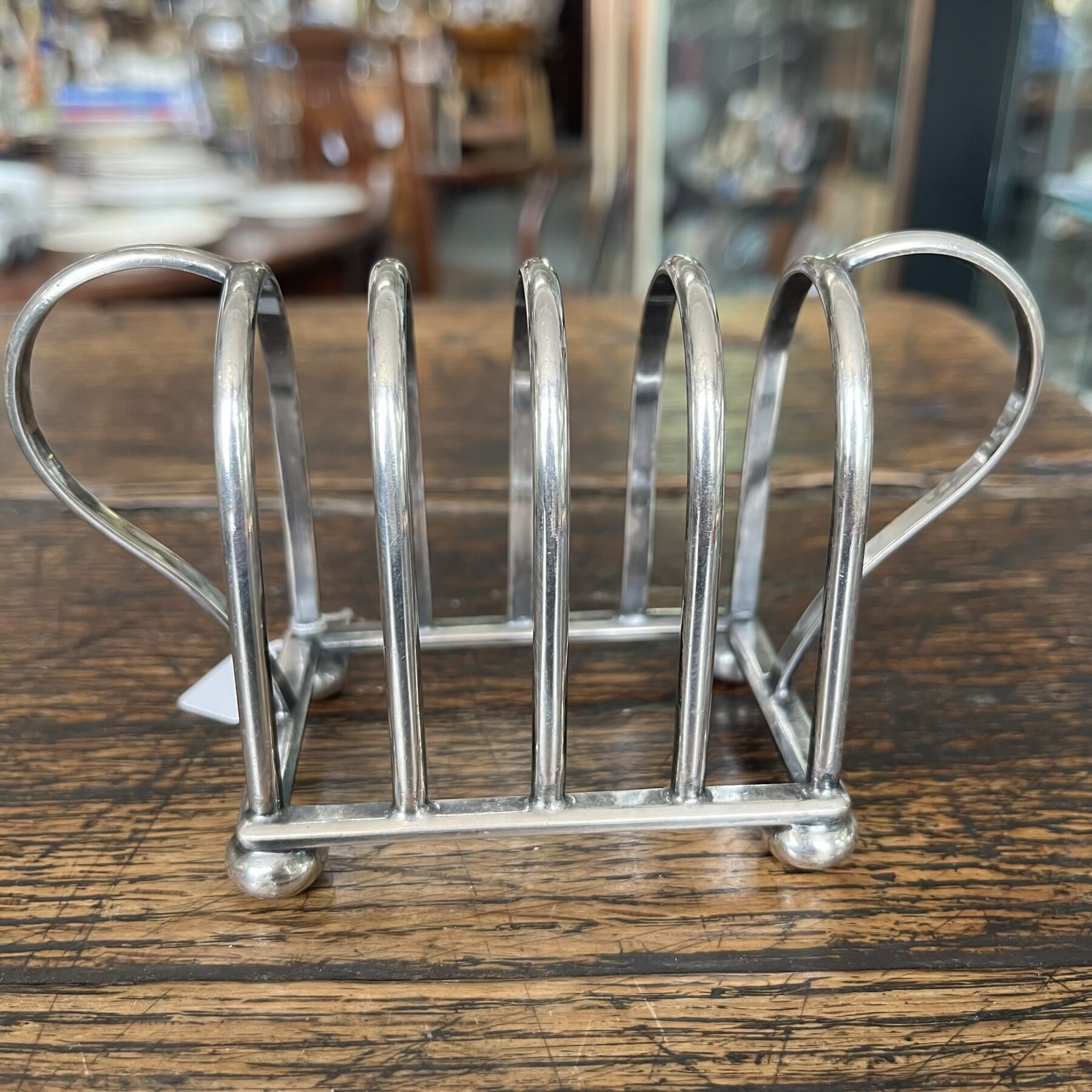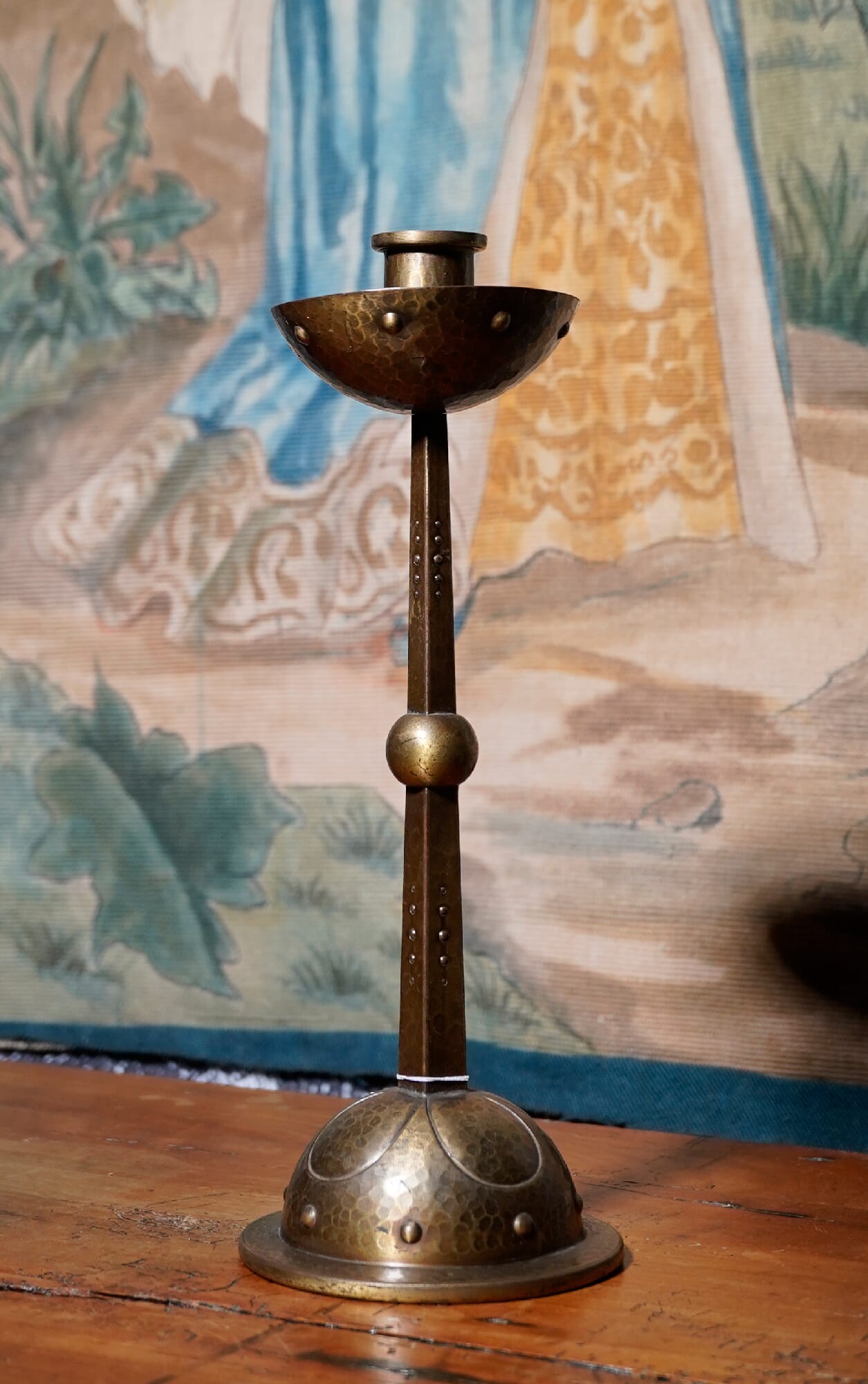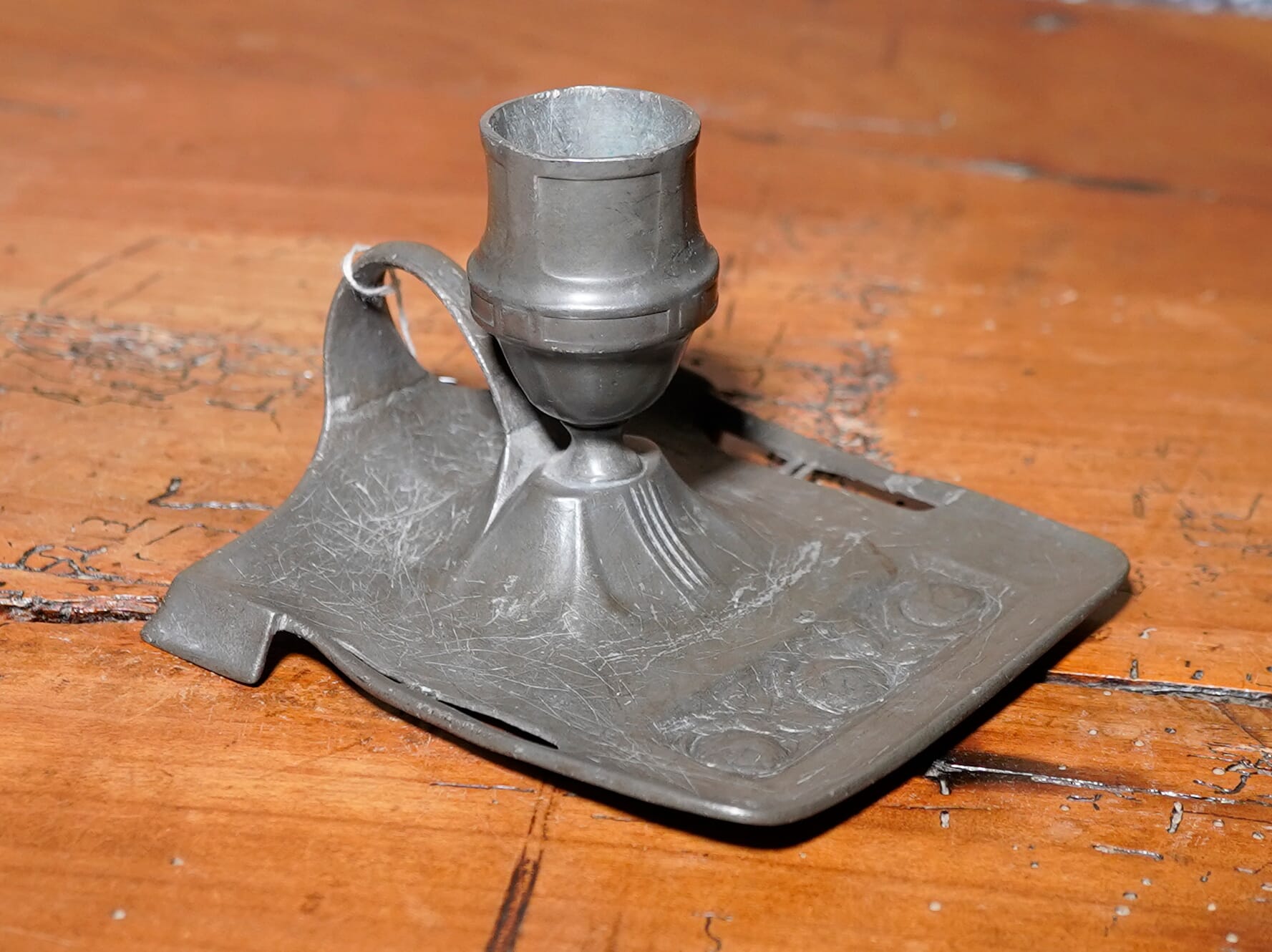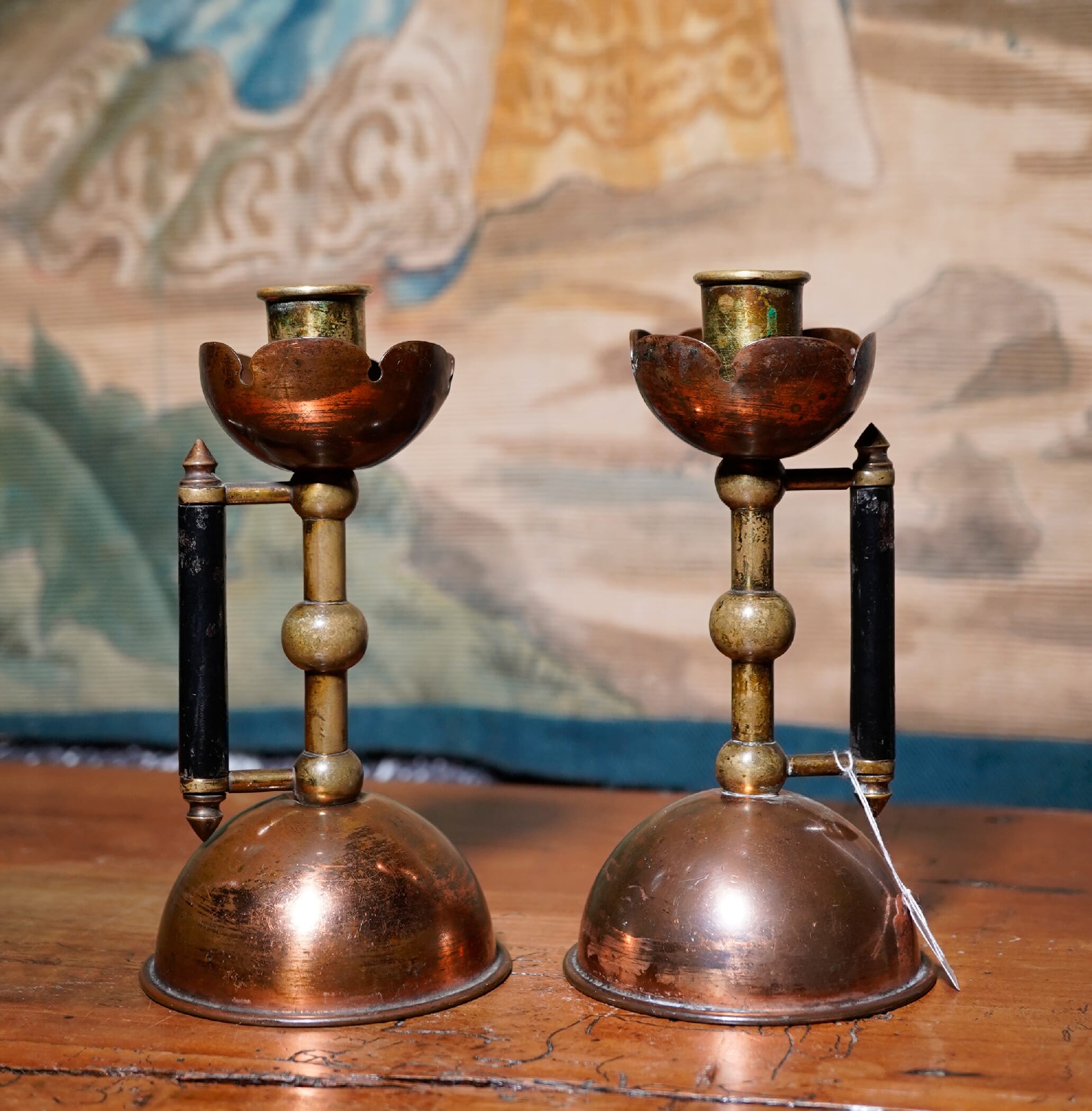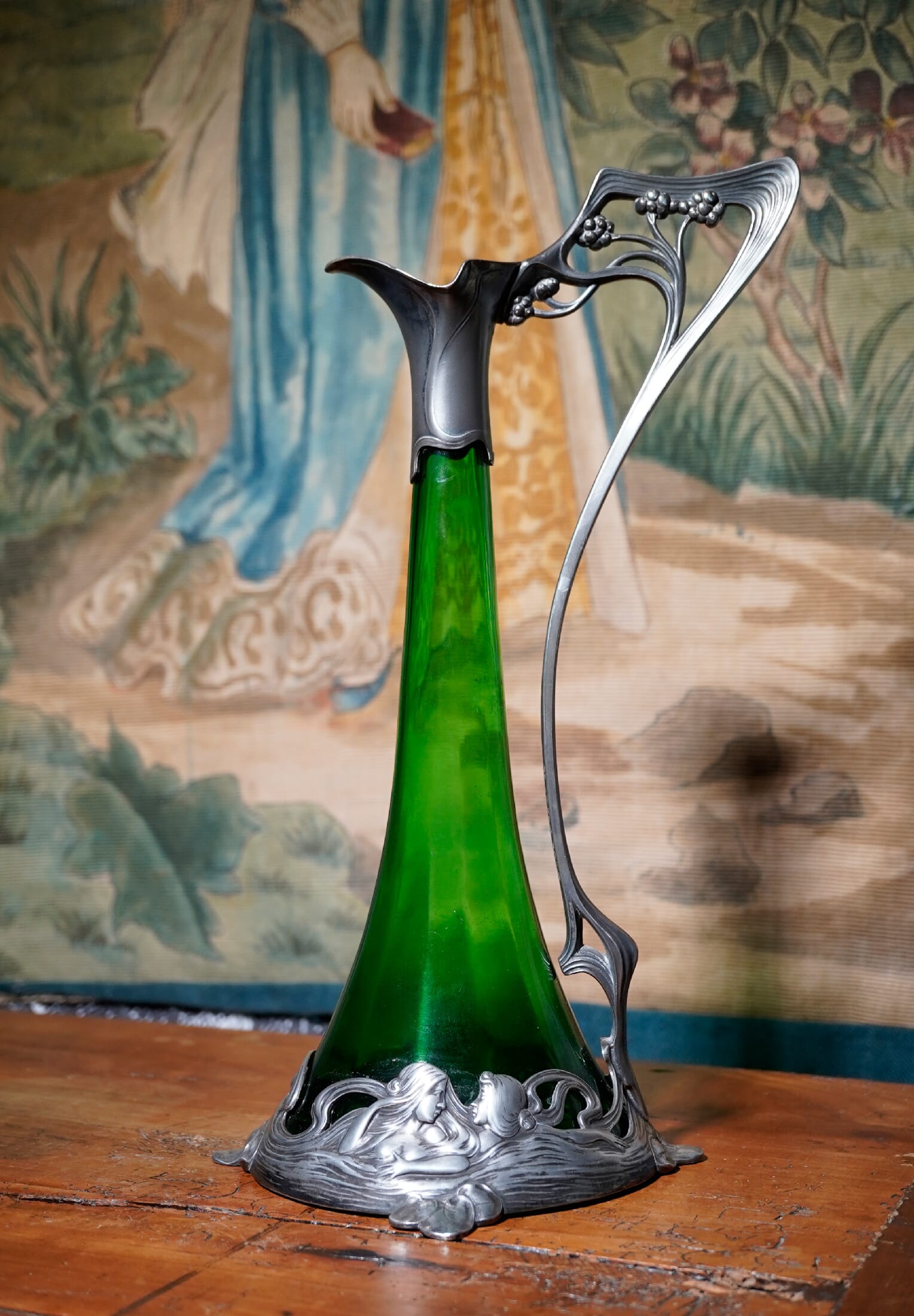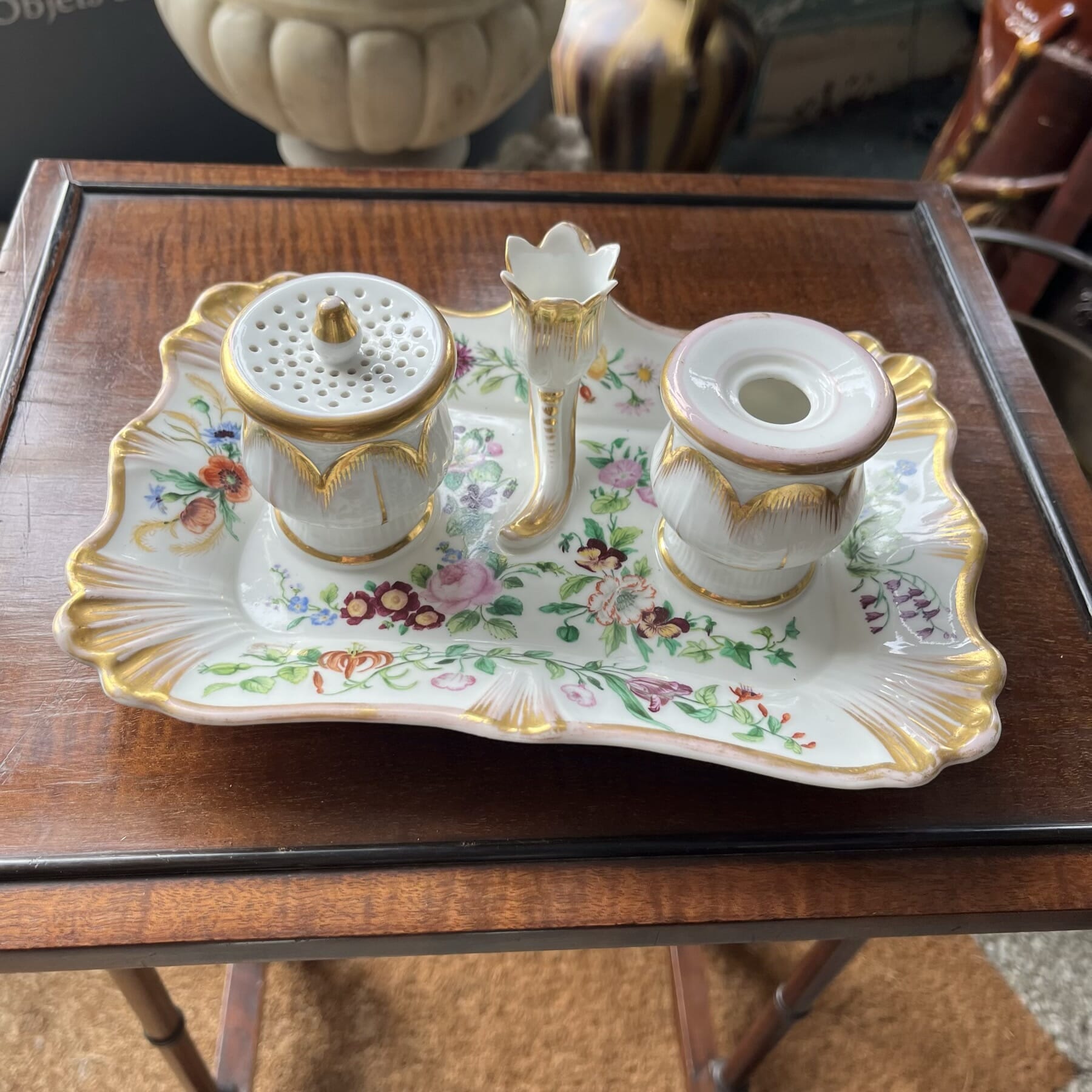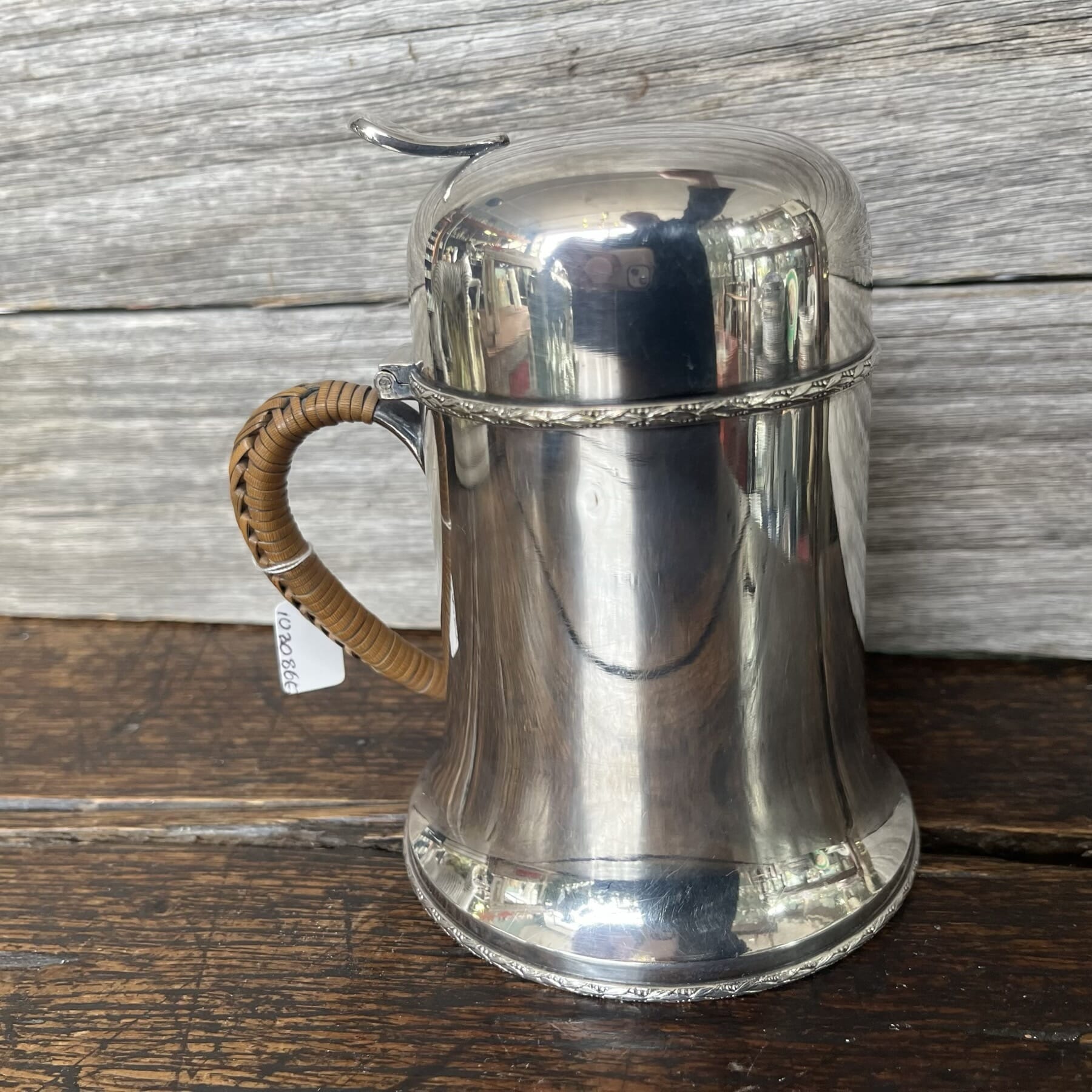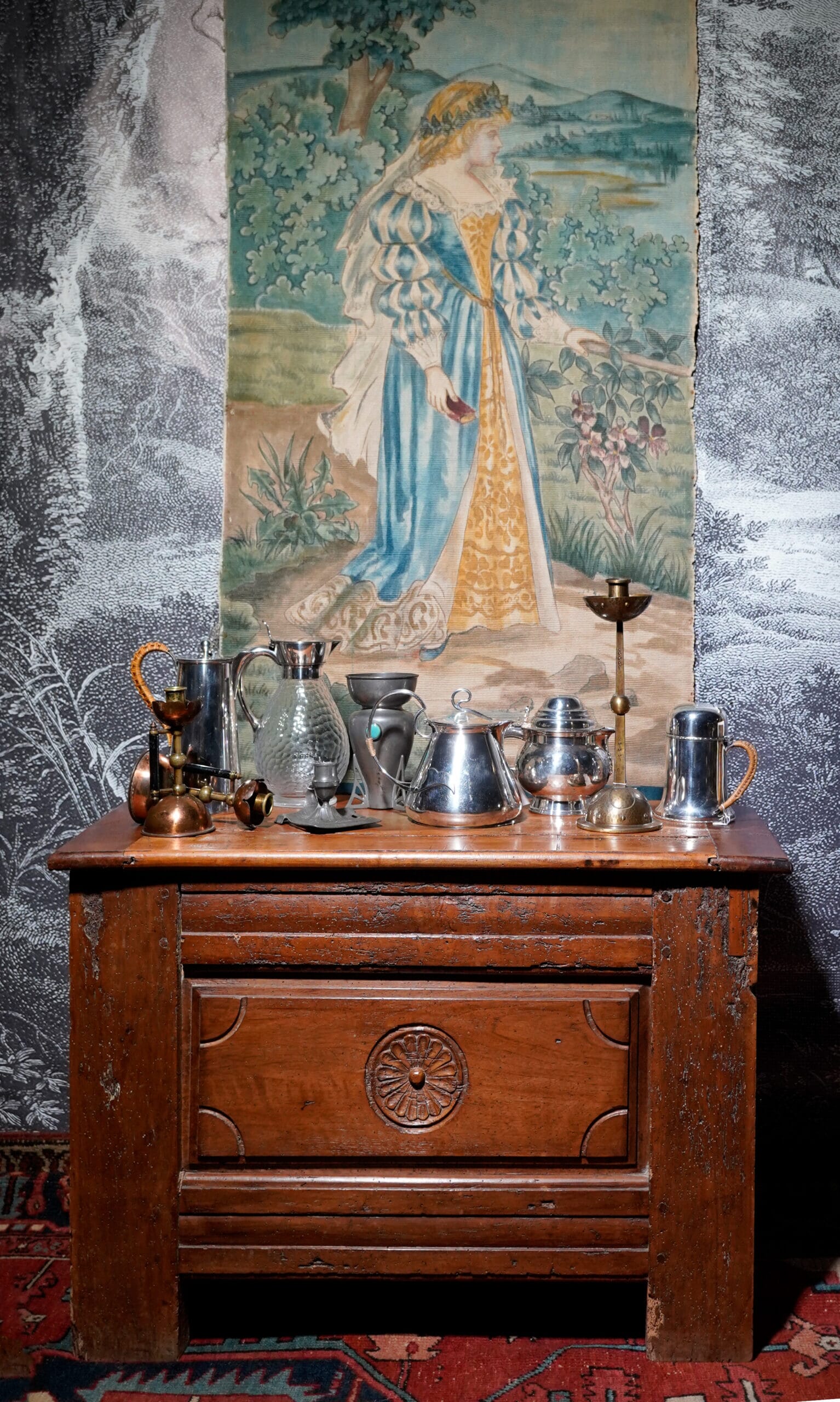
Welcome to the latest offerings from Moorabool Antiques.
Fresh to stock is a wonderful selection of Furniture, Silver, Pewter, Ceramics & Pottery with one thing in common….. they belong to the fertile artistic period in the late 19th/early 20th century, where styles such as the Pre-Raphaelites, the Arts & Crafts, the Art Nouveau, and the more ‘Modernist’ designs all found their roots.

In Australia, the period saw a flourishing group of artists exploring the rest ideas from Europe, but giving them an Australian meaning. The elaborate Art-Nouveau style of the ‘throne chair’ in today’s Fresh Stock is a fine example: made from Australian hardwood, the remarkable design is a complete departure from the Victorian tradition of how a chair should look. The tall, skinny back is rather distinct, taking on the form of a lyre bird’s tail.
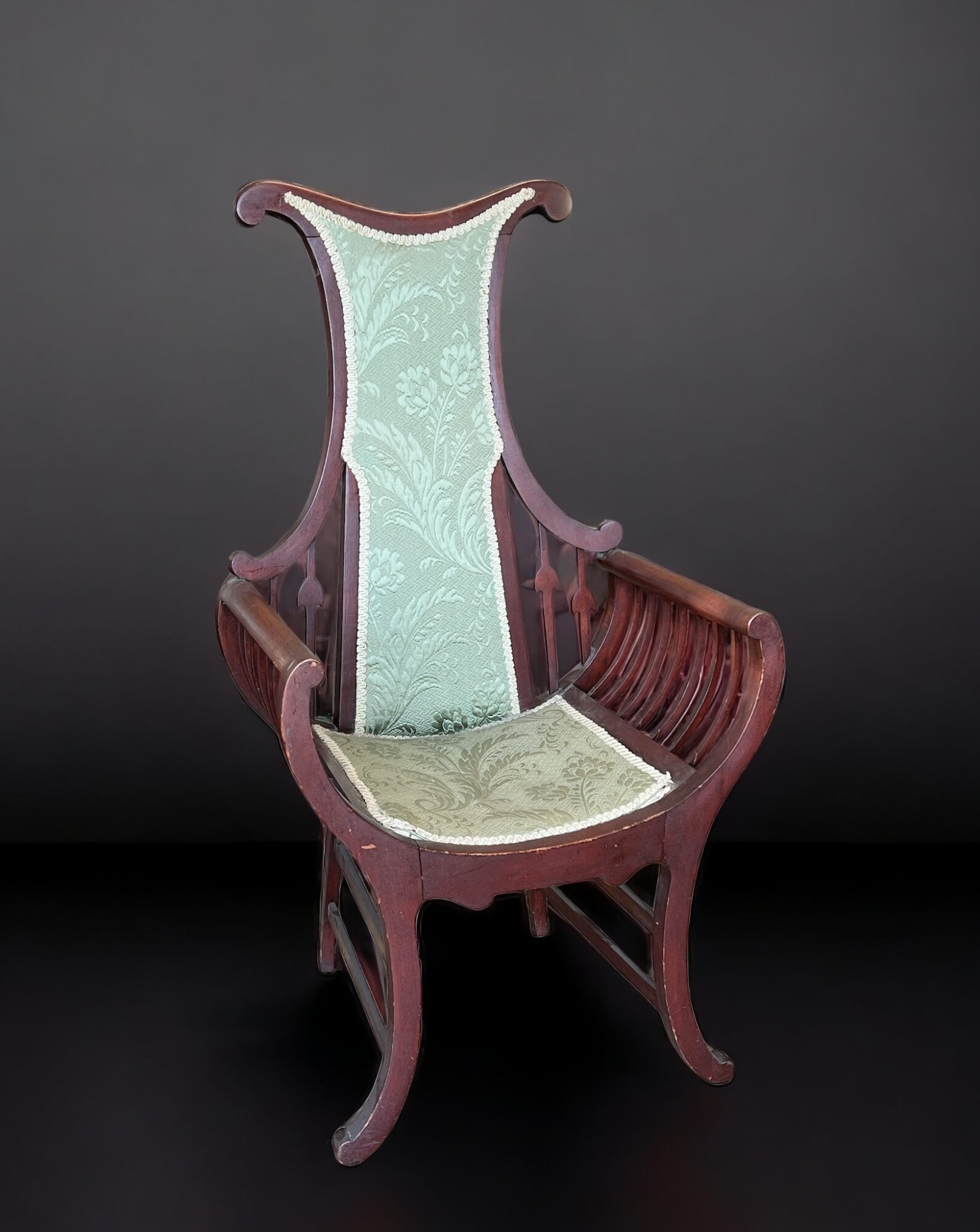
One of the highlights of this year is the watercolour recently identified amongst the many paintings in the collection of the late John Rosenberg. It’s an Ida Rentoul Outhwaite fairy, familiar from the many children’s books she illustrated in the 1920’s-30’s. While her style is borrowing from the overseas greats of book illustration of the time – Beardsley, Rackham and Greenaways – she invents an endless contrast to anything else produced prior by incorporating the Flora & Fauna of Australia.
(This example is not the best to illustrate this theme, as it has nothing Australian in it – the Blackberry being an introduced pest, and therefore also its attendant fairy!)
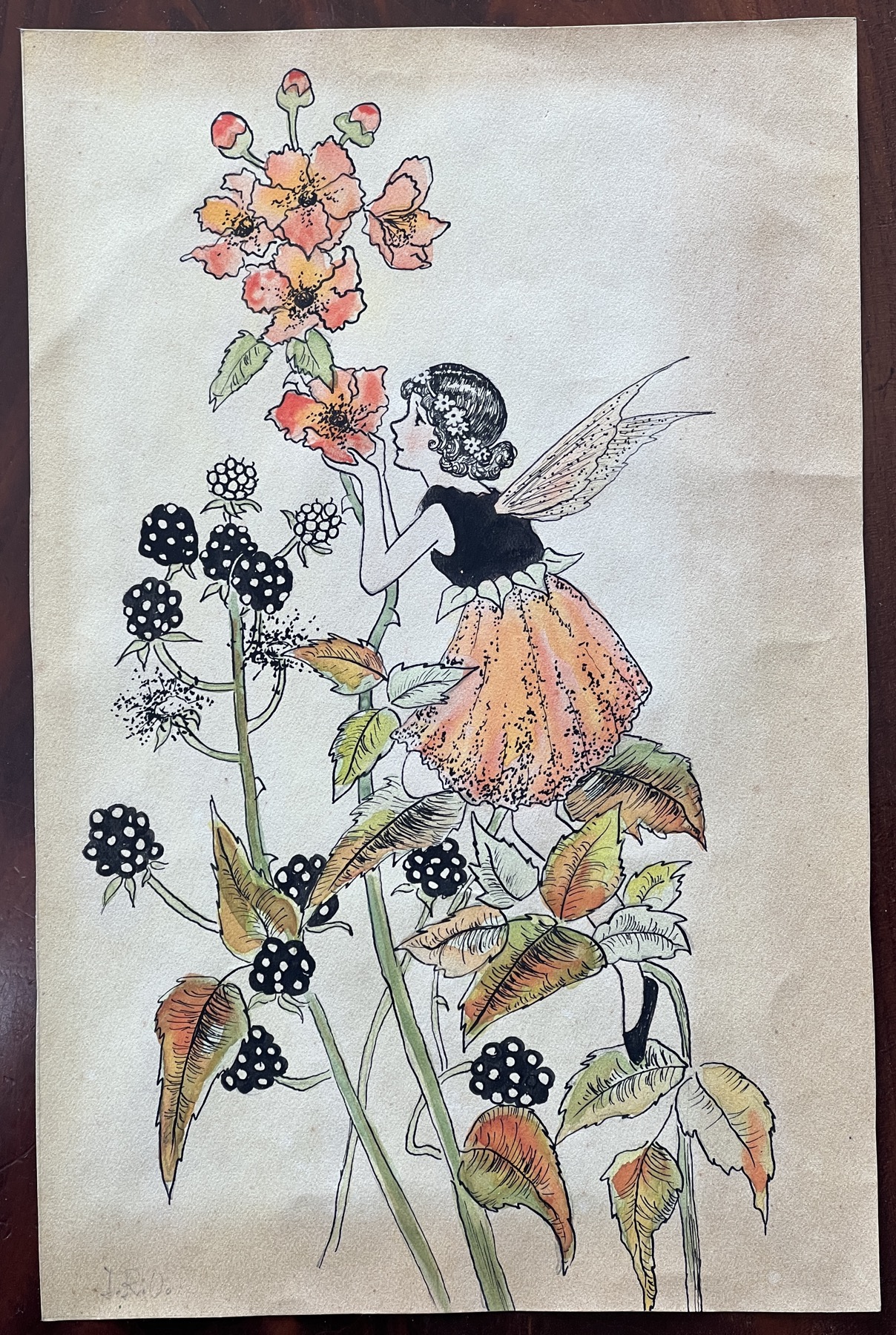
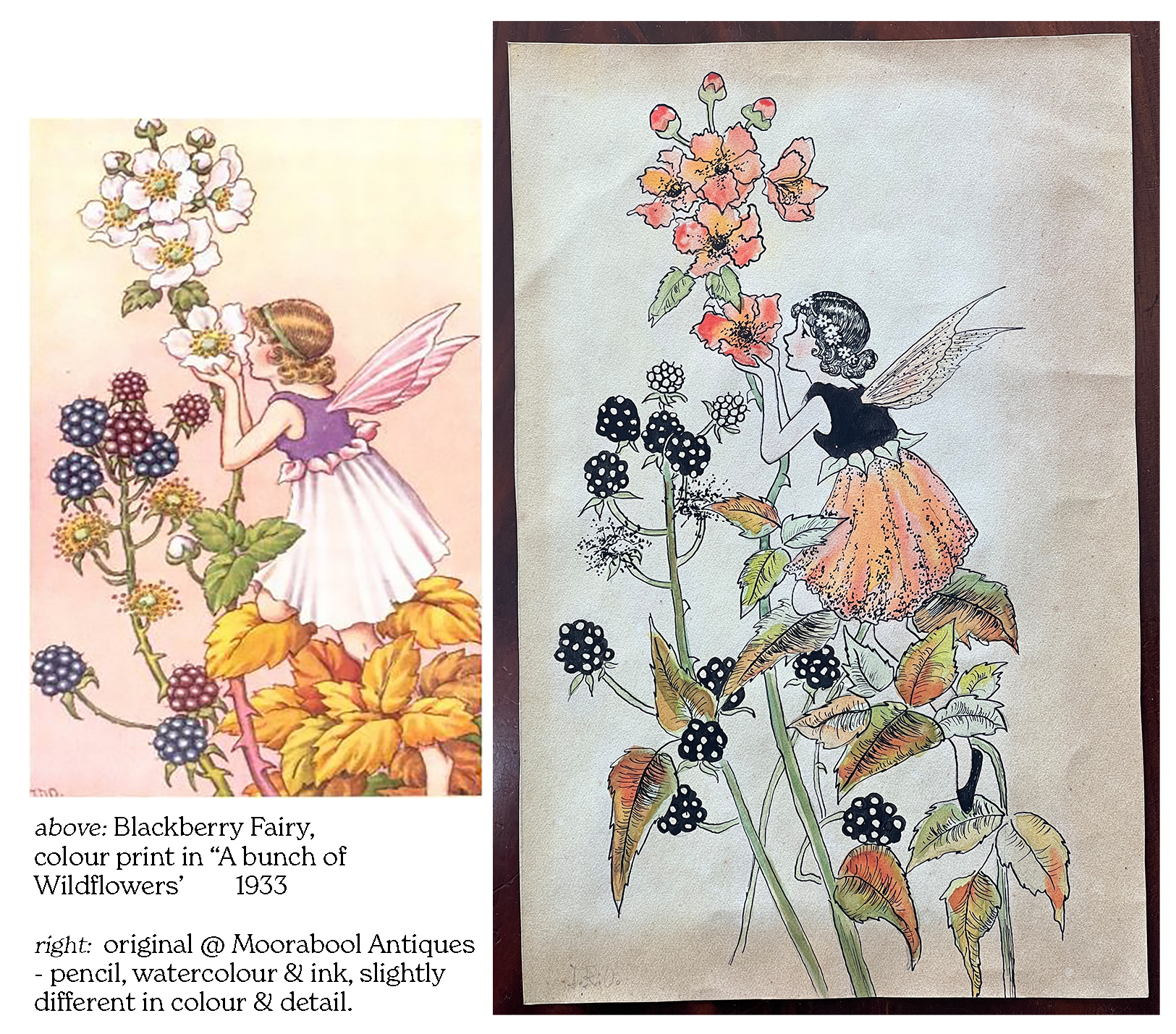
While many of these are now broken up for their prints, this example isn’t a print: it’s an original pencil sketch, which has been coloured with watercolours & finished with her signature black ink outline and details. It is a prototype sketch for the illustration of ‘The Blackberry Fairy’, one of 6 colour prints included in her 1933 publication ‘A Bunch of Wildflowers’. It was badly framed in such a way that the signature – her initials ‘I.R.A.’ – were covered by the mount! Taking it off & discovering the printed version was quite a thrill: note the differences between our version and the printed version, indicating there must be another with the different details out there, from which the print for the book was made.

The greatest of the Art & Crafts ‘influencers’ was Dr Christopher Dresser. His design philosophy was radical in the Victorian world, which by the 1870’s was stagnating, repeating earlier designs in ever-more complex convulsions of rococo scrolls and classical columns. Instead, he looked to the East – being the first European to be granted a travel passport in Japan in the 1870’s, where he travelled from end to end, examining Japanese crafts and then bringing the simplicity and elegance of good design back to England. He spent a huge amount of effort influencing manufacturers to create elegant, useful wares. In today’s fresh stock are a number of pieces that look like they should be made well into the 20th century – but are in fact 19th century products. Dresser freely distributed his designs, and published a number of books on the subject; many potters and metal workers used these designs as they caught the attention of the ‘hip-crowd’ of the late 19th century. He was the ‘Social Media Influencer’ of his time!
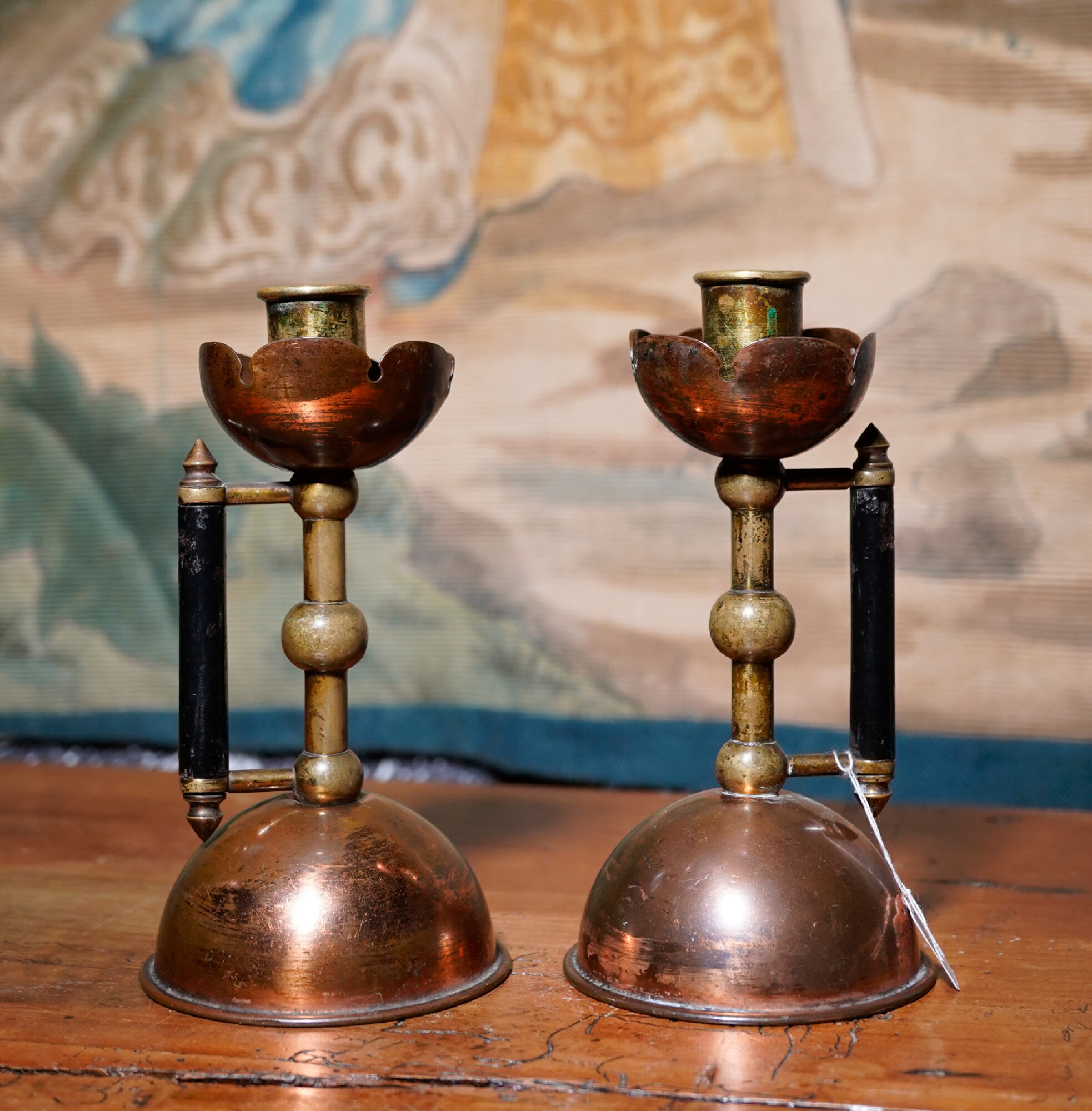

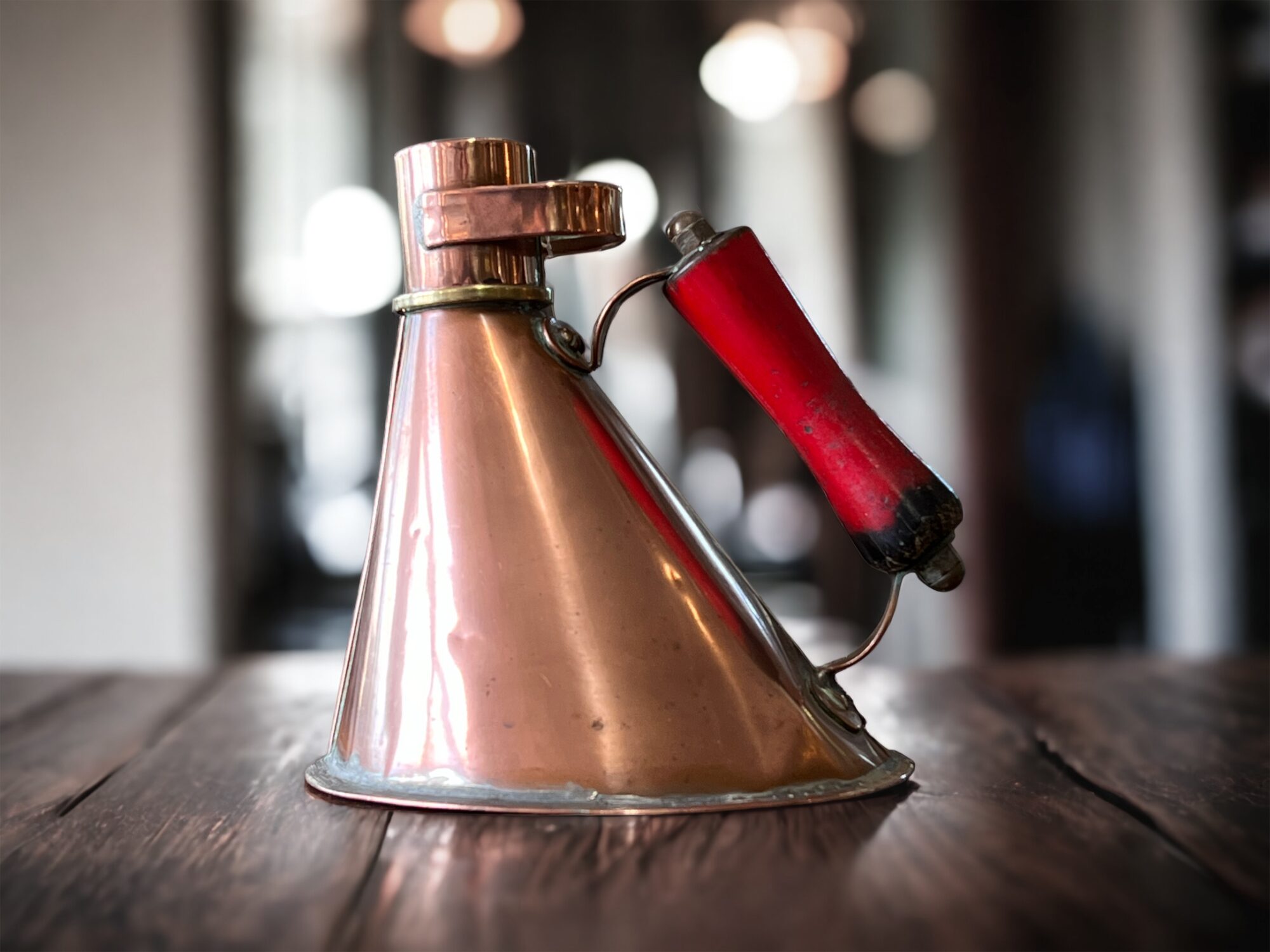
This reflects Dresser’s own philosophy very closely: form follows function: the broad base is stable in choppy seas, and the form is simple for a metal worker to create from flat sheets. The handle angle ensures steady flow of the contents, in all a very well designed piece, created by a practical industrial mind – just no Christopher Dresser’s.


On the Continent, the Arts & Crafts movement took its own direction. In Germany, the Jugendstil , literally translating as ‘Youth Style’, produced some remarkable objects that still appeal to the modern eye due to their ‘sophisticated simplicity’.
The candlestick shown here is WMF, circa 1900, and retains the rare original patinated finish. It has a style that could date to anywhere in the 20th century, but was actually conceived in the last years of the 19th – remarkable.
On a different trajectory was the French designs we know as ‘Art Nouveau’. This style borrowed from the preceding Rococo style, with organic forms that appear to grow – but took it to new extremes.
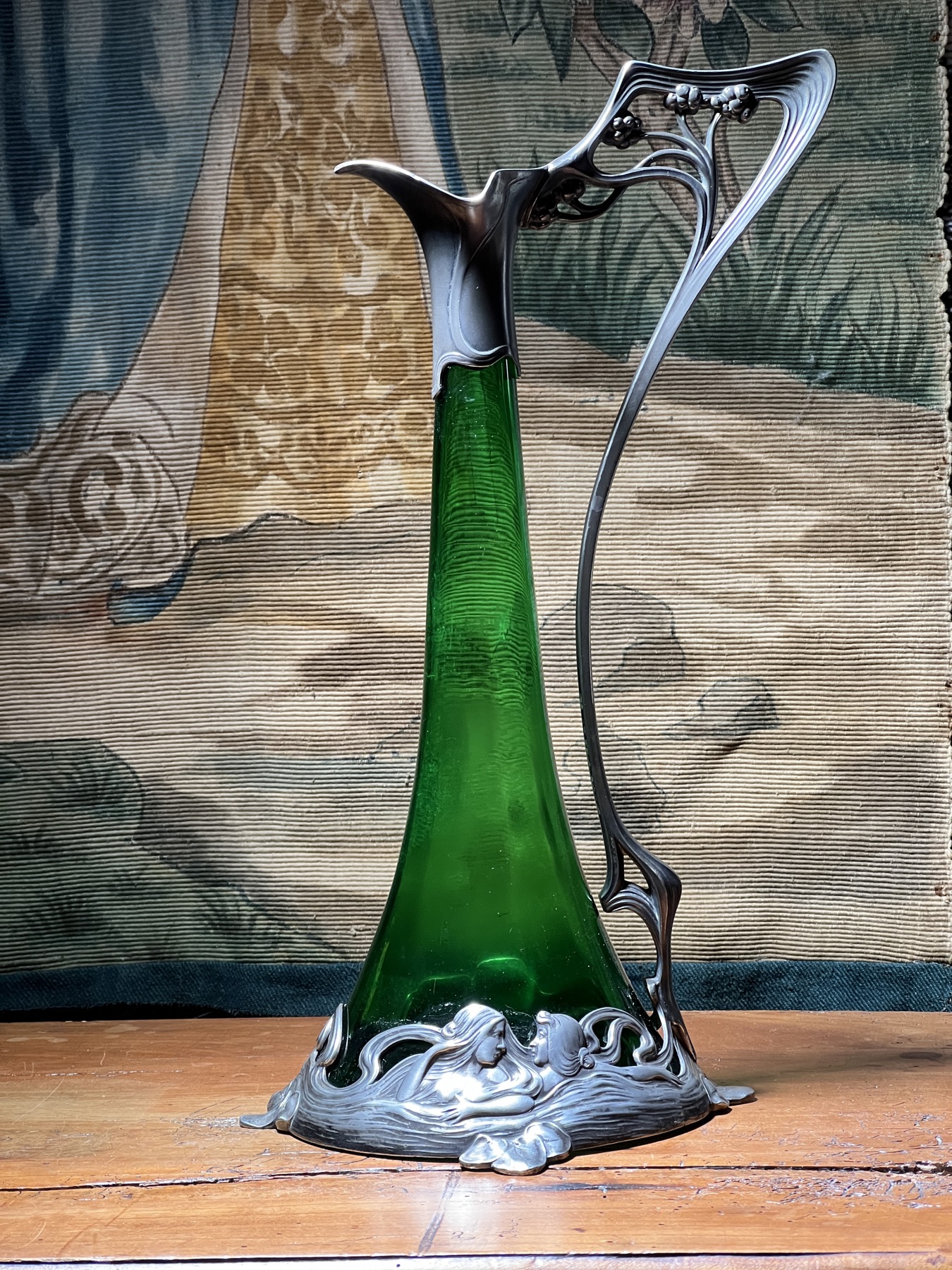
Also by WMF is this remarkable claret jug. The very tall, skinny sea-green glass vessel is encased & protected by a flowing stream around the foot, from which emerge water-nymphs: the ‘waves’ are actually their long flowing hair. An organic handle that looks like it grew rises up to the pewter mouth, with a beautiful spray of flowers moulded in the round within the protected elbow.
It’s a splendid example of Art Nouveau at its best.
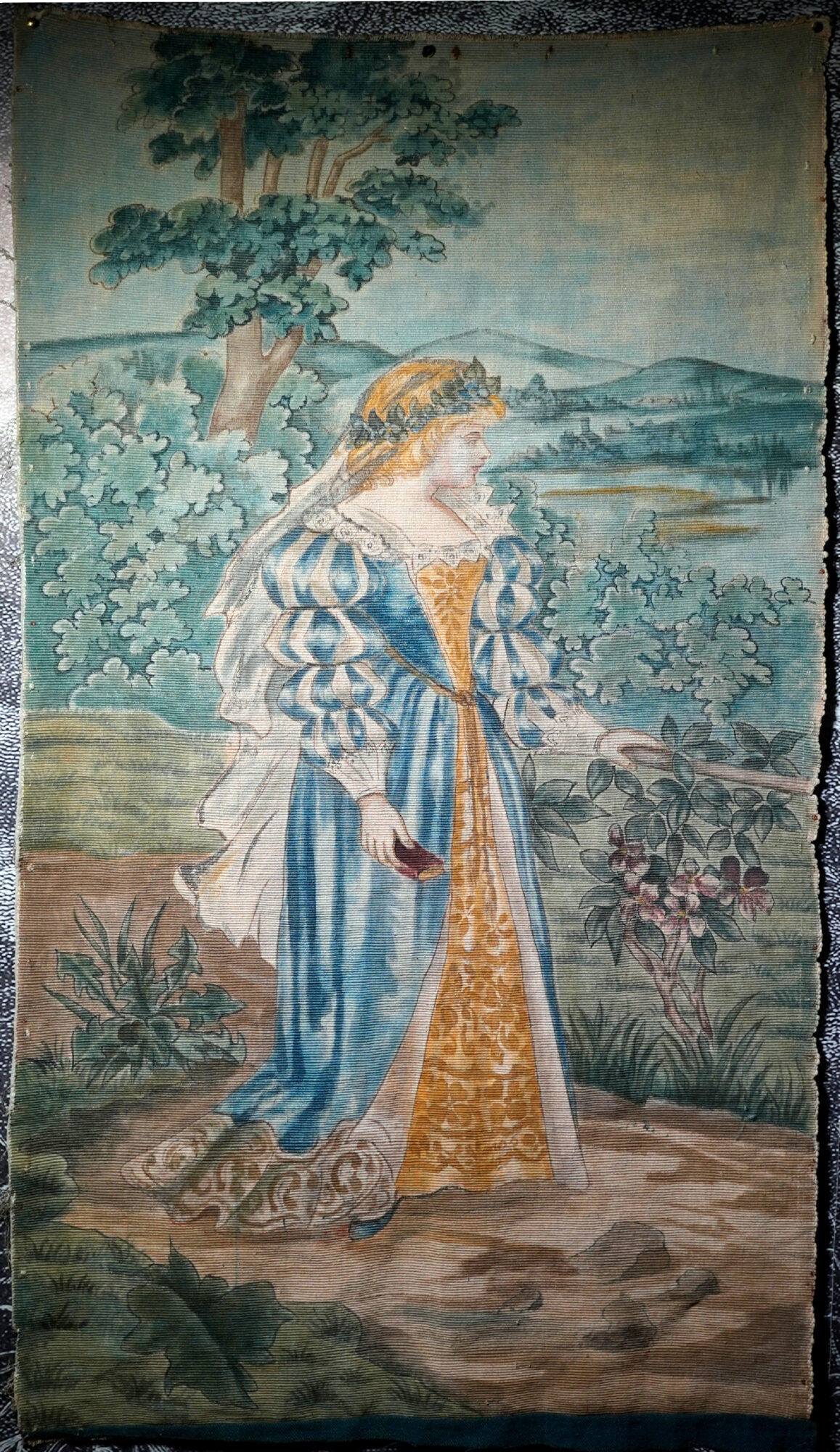
This large wall hanging is an example of anther closely related style of the period, the Pre-Raphaelites. Formed by mostly painters who sought to break away from the genre painting of the Victorian era, instead of looking for something new, they looked back – deciding that anything from Raphael onwards was not worth looking at, but the earlier artists were more valuable as as influence. This beauty depicted here in watercolour on a heavy fabric (probably upholstery fabric) is a fine example of the ideal; she is splendidly dressed in middle-ages clothing, and holds a book in one hand showing her intellect. Behind her is a landscape containing trees and a distant town amongst hills – the whole very reminiscent of the actual tapestry weavings of William Morris and his wife, May. While this example is ‘only painted’, it is very well done – the paints would have soaked into the fabric quickly, and great skill is shown in the control and tonal variation achieved. It is in fact a cross-over from the Textile Arts to the Fine Arts of painting – unfortunately not signed, but by a very competent artist.
Presently unframed, it was once stretched on a wooden stretcher. It would be fine as a wall hanging as-is (if kept in a dark place) – or to fully respect it, we can have it framed in a UV-resisting glass frame to preserve it for the future.
Please enjoy all the other unmentioned pieces shown below!
Fresh Stock
-
 French cherrywood panelled coffer of small size,18th C$1,450.00 AUD
French cherrywood panelled coffer of small size,18th C$1,450.00 AUD -
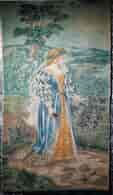 Arts & Crafts Wall hanging, Pre Raphaelite beauty in landscape, watercolour simulating tapestry C.1880$1,450.00 AUD
Arts & Crafts Wall hanging, Pre Raphaelite beauty in landscape, watercolour simulating tapestry C.1880$1,450.00 AUD -
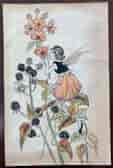 Ida Rentoul Outhwaite – Blackberry Fairy- original watercolour, circa 1933Sold
Ida Rentoul Outhwaite – Blackberry Fairy- original watercolour, circa 1933Sold -
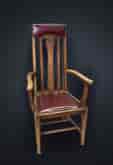 Oak Arts & Crafts armchair, red leather, circa 1900$580.00 AUD
Oak Arts & Crafts armchair, red leather, circa 1900$580.00 AUD -
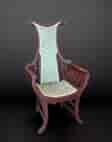 Stylish Australian Art Nouveau Armchair, Lyre back, c. 1905$645.00 AUD
Stylish Australian Art Nouveau Armchair, Lyre back, c. 1905$645.00 AUD -
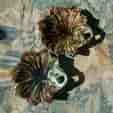 Pair of Majolica leaf shaped dishes, C.1880$145.00 AUD
Pair of Majolica leaf shaped dishes, C.1880$145.00 AUD -
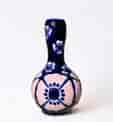 French art pottery vase, Pink Poppies after Camille Tharaud, c. 1910$285.00 AUD
French art pottery vase, Pink Poppies after Camille Tharaud, c. 1910$285.00 AUD -
 French Majolica wicker & leaf serving dish, circa 1880$145.00 AUD
French Majolica wicker & leaf serving dish, circa 1880$145.00 AUD -
 Lovatt – Langley Pottery bowl, simple form with mocha glaze, c.1925$145.00 AUD
Lovatt – Langley Pottery bowl, simple form with mocha glaze, c.1925$145.00 AUD -
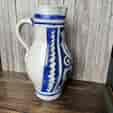 German Westrwald stoneware 2 Litre jug 19th CSold
German Westrwald stoneware 2 Litre jug 19th CSold -
 English arts and crafts pewter vase, with Turquoise Cabochon, C.1905Sold
English arts and crafts pewter vase, with Turquoise Cabochon, C.1905Sold -
 Arts & Crafts silver-plated jug, inset 1723 shilling, c. 1900$395.00 AUD
Arts & Crafts silver-plated jug, inset 1723 shilling, c. 1900$395.00 AUD -
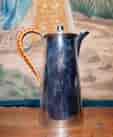 Silver plate Arts & crafts jug, by Henry Wilkinson and Co, 1892$645.00 AUD
Silver plate Arts & crafts jug, by Henry Wilkinson and Co, 1892$645.00 AUD -
 Stylish Art Nouveau silverplate jug, George Unite, Birmingham c.1905$480.00 AUD
Stylish Art Nouveau silverplate jug, George Unite, Birmingham c.1905$480.00 AUD -
 Glass claret jug with silver handle and spout, C.1885$760.00 AUD
Glass claret jug with silver handle and spout, C.1885$760.00 AUD -
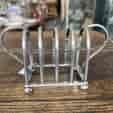 Small silverplate 4-slice toast rack, Dixon c. 1910$95.00 AUD
Small silverplate 4-slice toast rack, Dixon c. 1910$95.00 AUD -
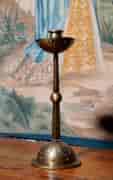 WMF Jugendstil candlestick, C.1900Sold
WMF Jugendstil candlestick, C.1900Sold -
 Small pewter Jugendstil chamberstick, C.1900$165.00 AUD
Small pewter Jugendstil chamberstick, C.1900$165.00 AUD -
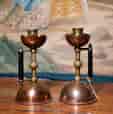 Pair of Arts & Crafts candlesticks, Christopher Dresser design, c.1885Sold
Pair of Arts & Crafts candlesticks, Christopher Dresser design, c.1885Sold -
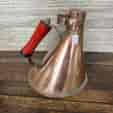 Interesting industrial oil can, canal boat style, C.1920$245.00 AUD
Interesting industrial oil can, canal boat style, C.1920$245.00 AUD -
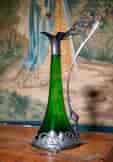 WMF Art Nouveau Claret Jug, green glass with plated pewter mounts C. 1900Sold
WMF Art Nouveau Claret Jug, green glass with plated pewter mounts C. 1900Sold -
 Bohemian porcelain flower-decorated desk set, c. 1880$295.00 AUD
Bohemian porcelain flower-decorated desk set, c. 1880$295.00 AUD -
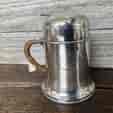 Silverplate covered tankard, hot milk jug, c. 1900$480.00 AUD
Silverplate covered tankard, hot milk jug, c. 1900$480.00 AUD


